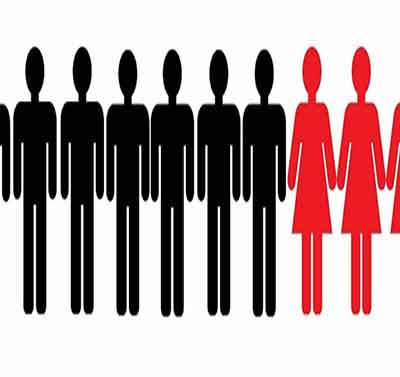Date: 14/03/2023
Relevance: GS-1: Role of women and women’s organization, population and associated issues, poverty and developmental issues, urbanization, their problems and their remedies.
Key Phrases: Politics, Bureaucracy, Women, Patriarchal Conditioning, Economy, Society, Inter-Parliamentary Union, Election Commission of India, Indian Administrative Services, Cabinet Secretary, Female Literacy.
Context:
- Women often opt out of civil services due to certain social factors such as being posted in distant cadres, patriarchal conditioning, and the need to balance family commitments.
Key Highlights:
- India's economy is one of the fastest-growing in the world, with
the IMF forecasting 6.8% growth for the current year, compared to 1.6% for
the US.
- It is also predicted to become the third-largest economy in the world by 2030, behind only the US and China.
- India's economic growth has not been matched by women's participation in the country's economy, politics, and society.
- Recent elections in India have shown a striking contrast. The
female voter turnout has increased in the country. Seven out of eight states
that went to the polls in 2022 saw a jump in female voter turnout.
- Though this sounds promising, the increasing proportion of women voters seen in local, state and general elections has not translated into more women contesting elections.
Women's Participation in Politics:
- As per data compiled by the Inter-Parliamentary Union (IPU), in
India, women make up 14.44 per cent of the Lok Sabha.
- A glance at the data in the latest available report of the Election Commission of India (ECI) shows that women represent 10.5 per cent of all Members of Parliament as of October 2021.
- For all the state assemblies, female MLAs’ representation stands at an average of 9 per cent.
- India’s ranking in this regard has fallen over the last few
years. It is currently behind Pakistan, Bangladesh and Nepal.
- The data for May 2022 showed that women’s representation in Pakistan was 20 per cent, in Bangladesh 21 per cent, and in Nepal was 34 per cent.
- Since Independence, women’s representation in Lok Sabha has not even increased by 10 per cent.
Women's Participation in Bureaucracy:
- The representation of Indian women in bureaucracy is also lacking. Women’s participation is low enough for several public services jobs at the Centre and states to facilitate free applications for women candidates.
- Despite this, as per Indian Administrative Services (IAS) data and the central government’s employment census of 2011, less than 11 per cent of its total employees were women.
- In 2020, this reached 13 per cent. In fact, out of a total of
11,569 IAS officers entering service between 1951 and 2020, only 1,527 were
women.
- Further, only 14 per cent of Secretaries in the IAS were women in 2022. There are only three women chief secretaries across Indian states and union territories.
- India has never had a woman cabinet secretary. There have been no women Secretaries of Home, Finance, Defence and Personnel, either.
Staggering Contrast:
- According to the most recent official data from the Union Public
Services Commission (UPSC), in 2019, approximately 367,086 women applied
for the UPSC examination, with 177,611 women actually taking the exam.
- Of those who took the exam, only 1,534 women were successful in qualifying. In contrast, during the same period, 768,175 male candidates applied for the exam, with 390,671 of them actually taking the exam.
- Additionally, women candidates are more likely than men to seek voluntary retirement from service.
- These numbers show a staggering contrast in male and female participation. Additionally, women candidates are more likely than men to seek voluntary retirement from service.
Primary Challenges:
- The primary challenges to women's empowerment are structural
barriers that make it challenging for them to join the services.
- These obstacles include service conditions that involve postings in remote areas, patriarchal conditioning, and balancing family commitments with the demands of the job.
- These social factors often cause women to opt-out of civil services. Additionally, there is a widespread perception that women are best suited for "soft" ministries such as Social Welfare, Culture, Women, and Child Development.
Conclusion:
- Upon a brief examination of other sectors, it becomes apparent that the situation is equally dismal. Women only make up 20.37 percent of MSME owners; while a mere 10 percent of startups are founded by females.
- Additionally, only 23.3 percent of women are employed in the
workforce, but measuring their participation can be challenging.
- Most available data on India's female labor force does not account for unpaid work, which is frequently performed by women.
- Furthermore, women often do not recognize their labor as actual work. This issue highlights the importance of female literacy, both financial and academic.
Source: The Indian Express
Mains Question:
Q. What are the social factors that lead women to opt-out of civil services? Provide appropriate examples to clarify your explanation. (150 words).







